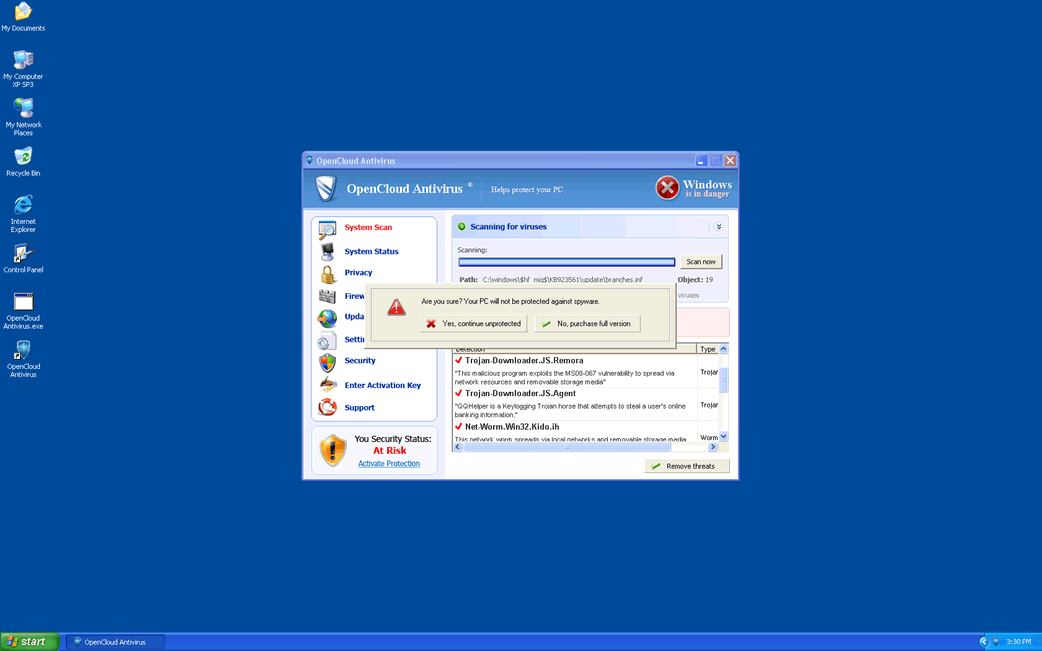New Messages Notification Email Scam
After a thorough examination by cybersecurity experts, it has been concluded that these messages are part of a scam campaign. The emails masquerade as notifications from a reputable email service provider. Their primary aim is to deceive recipients into accessing a phishing webpage and divulging personal information. It is strongly advised that recipients refrain from clicking on any links provided in these emails or engaging with them in any manner.
The New Messages Notification Email Scam Seeks to Obtain Sensitive Information from Users
The emails falsely assert that the recipient has six pending messages and urge immediate action to restore access to their email functions. They specify that these messages have been awaiting delivery since a particular date and time, prompting recipients to click a 'SIGN IN' button to resolve the issue. However, this button redirects users to a phishing website designed to capture login credentials illicitly.
Once on the phishing site, users are prompted to type their email address and password to proceed with the supposed sign-in process. However, these entered details are instead transmitted directly to the fraudsters. The theft of email account login credentials poses numerous risks, as fraudsters can exploit this information for various nefarious purposes.
For example, fraudsters may scour through personal information contained within emails or use compromised accounts to disseminate phishing emails or distribute malware to contacts. Furthermore, they may attempt to gain unauthorized access to the victim's social media and other online accounts, leading to further complications such as financial loss and identity theft.
Moreover, fraudsters might opt to sell the pilfered login information to third parties, exacerbating the potential consequences for the victim. Hence, recipients are strongly advised to exercise caution and validate the authenticity of such emails before undertaking any actions in response to them.
Red Flags That Can Help Users Avoid Phishing and Fraudulent Emails
Recognizing red flags in emails is crucial for avoiding falling victim to phishing and fraudulent attempts. Here are some essential red flags that users should be aware of:
- Sender's Email Address: Check the sender's email address carefully. Phishing emails often come from addresses that mimic legitimate sources but contain slight misspellings or alterations.
- Urgent or Threatening Language: Be wary of emails that use urgent or threatening language to prompt immediate action. Phishing emails usually bring into being a sense of urgency to pressure recipients into responding without thinking.
- Requests for Personal Information: Legitimate organizations typically do not request sensitive personal information via email. Be cautious of emails asking for passwords, account numbers or other confidential details.
- Unsolicited Attachments or Links: Avoid clicking on attachments or links in emails from unknown or untrusted sources. They may lead to unsafe websites or download malware onto your device.
- Generic Greetings: Phishing emails usually use generic greetings like 'Dear User' instead of addressing recipients by name. Legitimate organizations usually personalize their communications.
- Poor Spelling and Grammar: Phishing emails often contain spelling and grammatical errors. While mistakes can happen, frequent errors may indicate a phishing attempt.
- Unsolicited Offers or Prizes: Be cautious of emails offering unexpected prizes, lottery winnings or unsolicited job offers. These are common tactics used to lure victims into phishing schemes.
- Mismatched URLs: Hover your mouse over links in emails to preview the destination URL. If the link address doesn't match the purported website or looks suspicious, it could be a phishing attempt.
- Unexpected Attachments or Downloads: Exercise caution when receiving unexpected attachments or downloads, especially if they are compressed files or executable (.exe) files. These could contain malware.
By remaining watchful and paying attention to these red flags, PC users can better protect themselves from falling victim to phishing and fraudulent emails.

